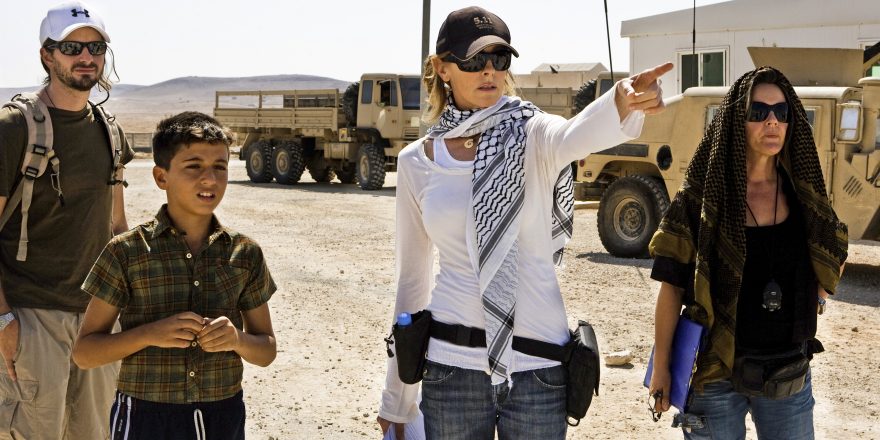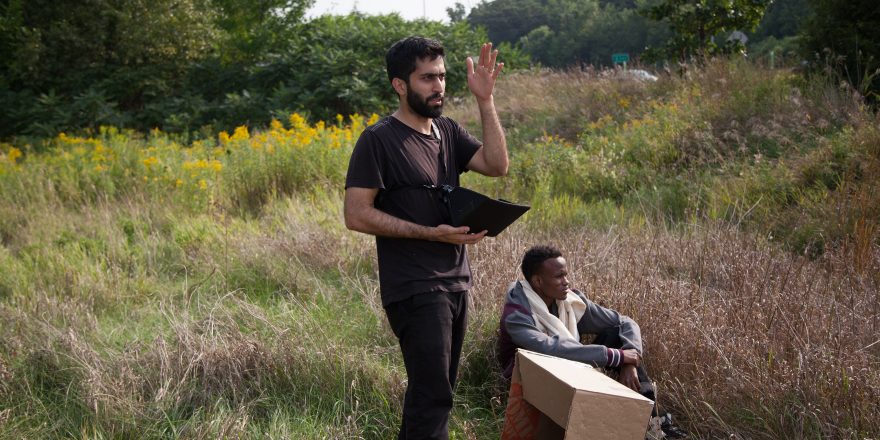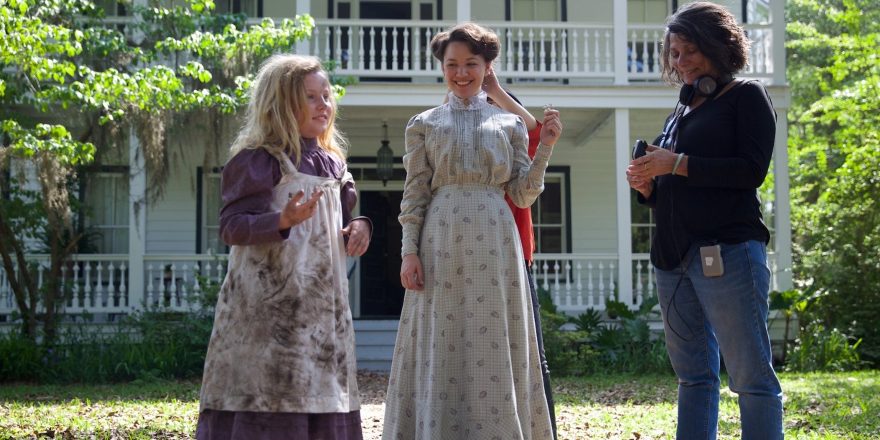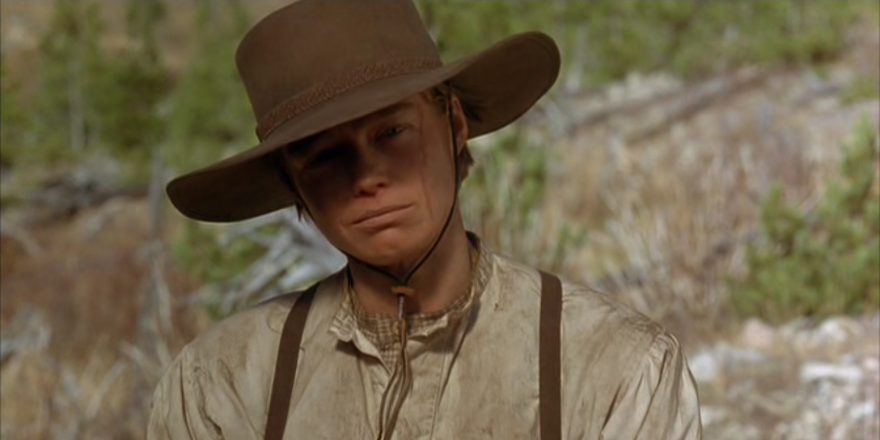When my 1993 Western The Ballad of Little Jo was released, I was labeled a “feminist” filmmaker. My career and opportunities have been defined by that brand, burned onto me by the primarily white male film industry and press. Lauded as subversive by feminists and revisionist by scholars of the Western genre, the film has had a great deal written about it and is taught in Cinema History departments in many U.S. colleges. At the time of release, the film was also strangely reviled by some white male critics. This was my first experience of the white male rage that has grown so prevalent today; that entitled resentment aroused when a female or non-white has the audacity to overstep onto his proprietary domain. Naïve, perhaps simpleminded, as a lifelong lover of Westerns, making one had been a lifelong dream for me. It never occurred to me to make a Western about a man because, well, I’m a woman. And as an artist, my desire to tell stories is driven by my inclination to tell stories about women.
We’ve come a long way since 1993 when Ballad was released. Now, we try to dismiss those blatantly proprietary white men as Trumpites, alt-right bigots, and mistakenly assume any liberal white man is unafraid of feminism and stands with us in valuing our experience. Stories with female protagonists, even feminist ones who have other interests besides getting the guy, are making money today. So with the current commercial viability of women’s stories, men who still dominate and control the film industry are jumping on the feminist bandwagon and making deals to write and direct our stories.
I moved to Los Angeles in the mid ’70s. An avid reader, I began frequenting the long-gone used bookstores, treasure troves, along Hollywood Boulevard. My greatest discoveries were a slew of 19th-century autobiographies by women, stories I never knew existed; whether famous or infamous, major or minor, these female figures had been written out of history or ridiculed into obscurity, eliminated from our national narrative. (I’m referring to the U.S. here, but the same pattern exists throughout the world.) These books changed my life. These were the stories that helped me understand, in the deepest sense, that not only were women always there, obviously, but also that we have always yearned to tell our stories too – because this is what all human beings do. This experience, these treasured pearls, became the foundation of my work. It was not an intentional mission, but a wild cry to myself, and a profound longing for everyone to acknowledge, “WE WERE THERE! WE ARE HERE! We have stories to tell. We have our stories to tell, voices rising from the dead. And we’ve always been interesting!”
The great American masters Coppola, Scorsese, Spielberg, etc. are often criticized for not making films with female protagonists. I’m grateful they haven’t. The few such films they did make were pretty weak and, frankly, as artists it’s clear they are inspired by being men, by issues of maleness, manhood, a search for themselves. I appreciate their unpretentious lack of interest in women (except in how women relate to their male protagonists). The only problem is that men dominate the film industry, so the entire experience of half of the world barely exists in popular culture.
It’s important for me to say here that I’m not talking about the cinematic artists who have a unique synergy with female protagonists, such as Bergman or Mizoguchi. And I am certainly not writing off the thousands of great films written and/or directed by men with extraordinary female characterizations. These, however, usually had an actress at the center, someone able to transcend or elevate often weak or one-dimensional material through the strength of their personality, a great performance or some degree of creative control. I am a great lover of classic Hollywood films, but let’s not forget that the outcome of most classics is that the good woman gets the man because that’s what she truly wants. Or rather, that’s what she used to want – supposedly. Today I find myself bingeing, devouring hours and hours of female-driven television shows created by women writer-producers who are giving us a kind of material and dramatic experience we’ve never had before. When directed by women, many female-driven shows may provide transcendent revelations (such as Anna Foerster’s Outlander episodes about lovemaking and rape). Women are finally present in their own stories. The success of these many shows reveals a profound hunger in contemporary audiences. Oh, and plenty of men like these shows, too.
In a more perfect world, all artists would be free to assume any identity to express themselves. But so far, only men have had this opportunity and it has included the assumption that their voices articulate everyone’s truths. In our society, white men speak for women and people of color. But we’ve learned that expressions of human existence revealed through the male gaze/lens are limited by maleness. We know that subjective truth ultimately can only be revealed through a subjective lens. I don’t question that male artists, for hundreds, thousands of years, have believed they were conveying truthfully the struggle, suffering and joy of all humanity. But we know now, this is blatantly untrue because, to be fair, they could only report the truth as far as their biases allowed them to.
In my years as an excavator, I’ve discovered dozens of stories of remarkable American women. Over the course of my career, I’ve tried to get some of these stories made into films. And I’m not unique. In the ’90s, there were many women writing scripts about little-known female historical figures, believing that our time had come. I recall a few scripts about one astonishing woman in particular, the most famous woman in America in her day. (Why don’t we know about her and so many of the other “greatest” women of their days?) None of these scripts were ever produced. Given the timeliness of that woman’s story now, I renewed my efforts to put together a treatment. Before I had a chance to go out with it, I read about a studio buying a pitch of her story from a young white, male writer-director, to be produced by a very powerful white male director.
Of course I’m furious that this man beat me to the punch, but I am even angrier knowing that since female-driven stories are now making money, men, who still have more opportunity, are shoving ahead of us in line to sell our stories. I don’t understand why it doesn’t occur to anyone that these may not be or become the best possible versions of this material, especially at this time. Lately there have been several such projects that I’m aware of, classic women’s novels or biopics set up by groups of male writers and directors. I can’t help imagining young men feverishly scouring Wikipedia and Google to uncover these golden nuggets of opportunity, the female-driven biopic – the story never before told.
Not to be too melodramatic, but the co-opting of women’s stories by male filmmakers does feel like a violation. I know these male-made films will not get at the essence of these women’s stories. Great heroines do not come to their greatness the same way great men do. The journey will always be fraught with the struggles of being a woman – society’s expectations, children, marriage, sexism, misogyny, our self-doubts and blockades at every turn … There is no acknowledged hero’s journey for women. Even Joseph Campbell didn’t believe women made these journeys, because he wasn’t able to recognize them. Despite the best of intentions, there is no way most male directors can bring the depth and emotional truth to portrayals of our lives. Even worse, the movies will probably suck, fail commercially and kill future opportunities – for women.
I try to understand how difficult it must be to relinquish the powerful assumption that you are the cultural standard-bearer of the world, entitled to tell all stories. Until recently, we, others, were grateful just to be represented in your stories, grateful to be seen, to be of interest. But now, the time has come for us, women and people of color, to speak for ourselves. This is not intended to humiliate white men – in fact it has nothing to do with them. Simply we, others, deserve to walk beside you, as full human beings in charge of and entitled to self-representation and expression.
Imagine, if you will, the discomfort many would feel if a woman writer-director made Moby Dick into a film, or got the green light to write and direct a biopic of George Washington, Joe DiMaggio, Chuck Yeager, or even Donald Trump. Why is this less valid than, say, Cary Fukunaga making Jane Eyre or directing Michael Apted Coal Miner’s Daughter, or What’s Love Got to Do With It being directed by Brian Gibson (a white Englishman)?
Clearly, this lack of imagination is still a problem for our sexist industry, because the statistics of women directors currently hired to direct studio films is close to zero percent. Episodic television stands at 6.4 percent as of 2016, a lower percentage than the year before. This includes 1.3 percent women of color, while white men dominate at a staggering 82.4 percent.
If you can’t imagine women telling your stories, at least acknowledge that we probably are the best tellers of our own stories. There is now undeniable evidence of the powerful vision women bring to their own stories as writers and directors; Reed Morano’s haunting vision for The Handmaid’s Tale is unforgettable, Patty Jenkins’ Wonder Woman thrilled millions of women around the world, Jill Soloway’s Transparent and I Love Dick, Ava DuVernay’s Queen Sugar, Jenji Kohan’s Orange is the New Black and Glow, the hit British series Happy Valley by Sally Wainright, and even Harlots, created by an entire team of women producers, writers and directors, just to name a few. This is our time. American audiences are clamoring for our stories – as told by us.








